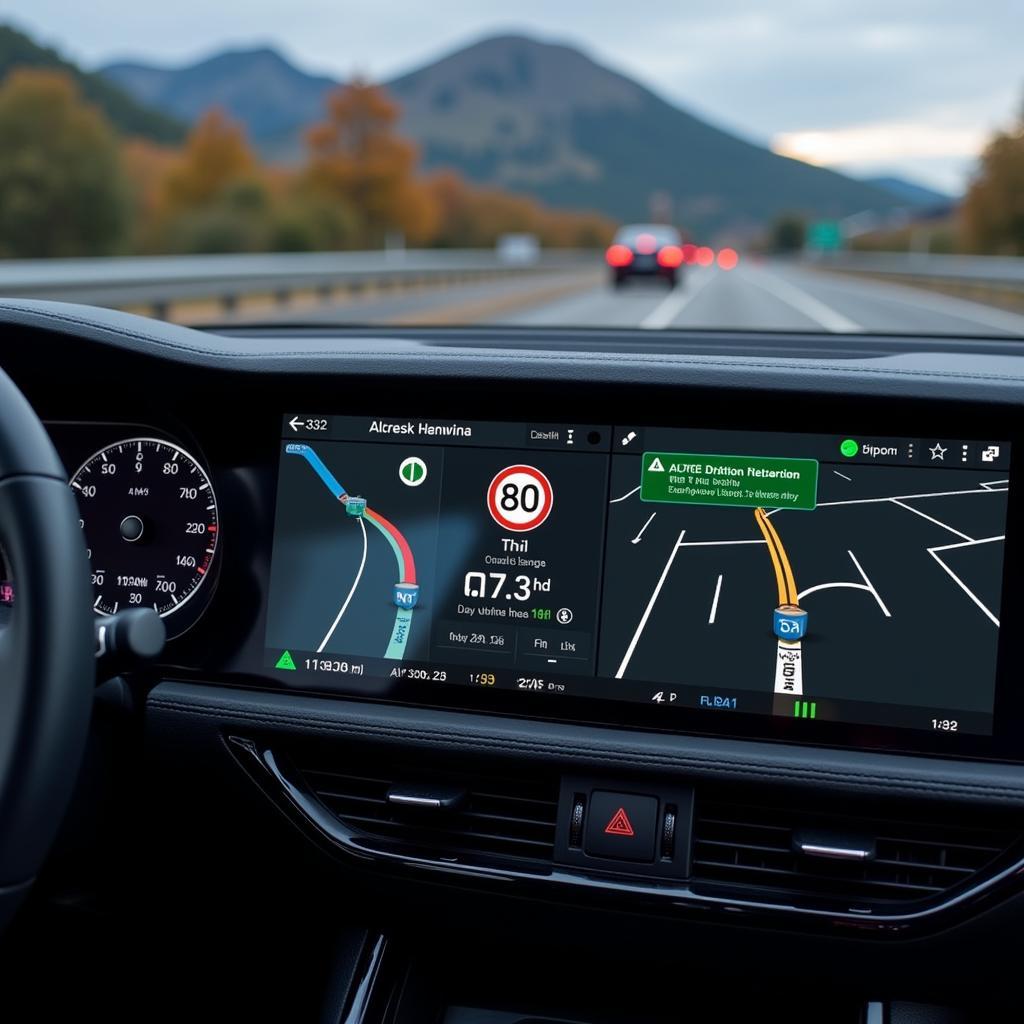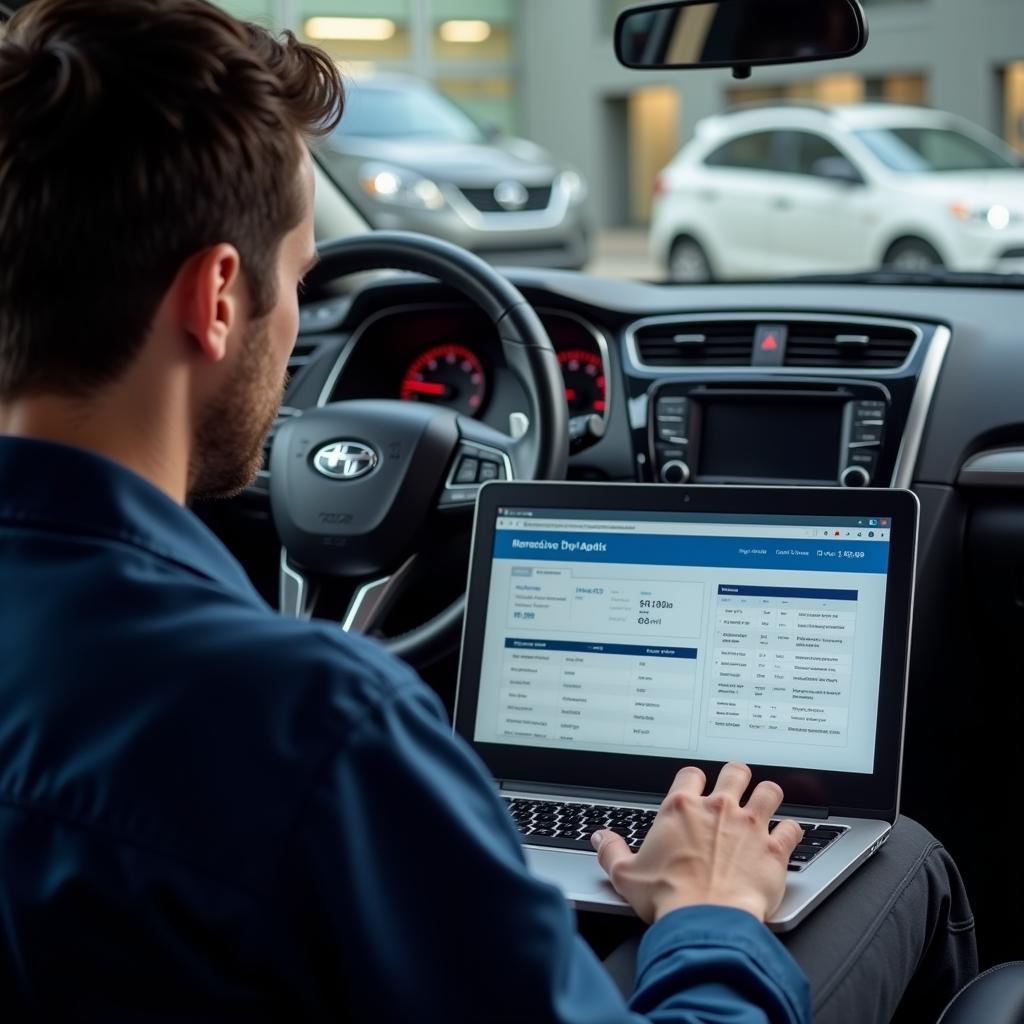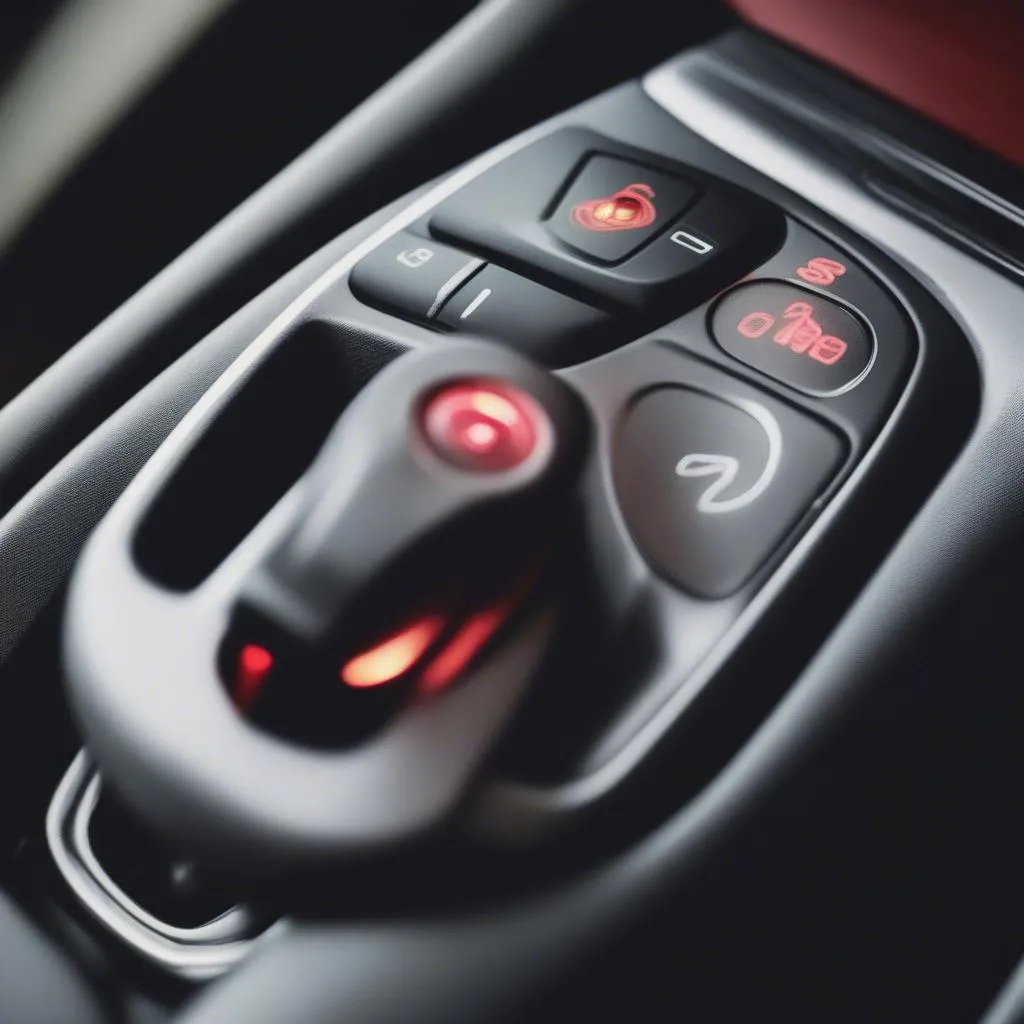The automotive industry is rapidly evolving, with advanced driver-assistance systems (ADAS) becoming increasingly commonplace. One such system gaining significant traction is the full-color active driving display with traffic sign recognition. This technology enhances driver awareness and safety by projecting crucial information directly into the driver’s line of sight. This article delves into the intricacies of this sophisticated system, particularly focusing on the 2020 models, and how remote diagnostics can be employed for troubleshooting and software solutions.
 Active Driving Display with Traffic Sign Recognition
Active Driving Display with Traffic Sign Recognition
Understanding the Technology
A full-color active driving display with traffic sign recognition is designed to provide real-time information to the driver, minimizing distractions and enhancing situational awareness. Here’s a breakdown of its core components:
1. Active Driving Display: Unlike traditional instrument clusters, the active driving display is a transparent screen positioned directly in the driver’s line of sight, usually above the steering wheel. This strategic placement allows drivers to receive critical information without taking their eyes off the road.
2. Traffic Sign Recognition: Utilizing a forward-facing camera, often integrated into the windshield, the system continuously scans the road ahead for traffic signs. Once a sign is detected, the system processes the image using sophisticated algorithms to identify and interpret the sign’s meaning.
3. Data Fusion and Display: The system then combines the recognized traffic sign information with data from other vehicle sensors, such as GPS and speedometer readings. This fused data is then displayed on the active driving display in real-time. For example, the system can display the current speed limit, no-passing zones, or upcoming stop signs.
Benefits of Full-Color Active Driving Display with Traffic Sign Recognition
The adoption of this technology offers numerous advantages:
- Enhanced Safety: By providing timely reminders of speed limits and other crucial traffic regulations, the system encourages safer driving habits and reduces the risk of infractions.
- Reduced Cognitive Load: Having vital information readily available in the driver’s direct field of view minimizes the need to look away from the road, reducing cognitive load and fatigue.
- Improved Driving Experience: The full-color display enhances the visual appeal and clarity of the information presented, making it easier for drivers to process and react accordingly.
Common Issues and Troubleshooting
While this technology significantly enhances driving safety and convenience, like any other complex system, it can encounter issues. Let’s explore some common problems and how remote diagnostics can be employed for efficient resolution:
1. Inaccurate Traffic Sign Recognition
- Problem: The system might misinterpret traffic signs due to factors like poor weather conditions, obstructed signs, or faded sign markings.
- Remote Diagnostic Solution: Analyzing the data from the front-facing camera and comparing it to GPS coordinates and map data can help identify recurring issues in specific locations. This information can be used to remotely update the system’s software and improve its recognition accuracy.
2. Display Malfunctions
- Problem: Issues with the display itself, such as flickering, dimming, or complete blackouts, can hinder the system’s functionality.
- Remote Diagnostic Solution: Running diagnostics on the display’s software and hardware components remotely can help identify the root cause. If a software glitch is detected, a remote software update can potentially rectify the issue. In case of hardware failure, remote diagnostics can help determine the need for physical repair or replacement.
 Remote Diagnostics for Car Issues
Remote Diagnostics for Car Issues
3. System Conflicts
- Problem: Incompatibility issues or software conflicts with other vehicle systems, such as navigation or adaptive cruise control, can arise, leading to system errors or malfunctions.
- Remote Diagnostic Solution: Remotely accessing the vehicle’s network can help identify any communication errors or software conflicts. By analyzing the logs and data from different systems, technicians can pinpoint the source of the conflict and implement the necessary software patches or updates remotely.
The Future of Full-Color Active Driving Display with Traffic Sign Recognition
“As we move towards an era of increasingly autonomous vehicles, technologies like full-color active driving displays with traffic sign recognition will play a crucial role in bridging the gap between human drivers and automated systems,” says Dr. Emily Carter, a leading automotive electronics engineer. “These systems are not just about enhancing driver awareness; they are about building trust and seamless interaction between humans and machines.”
The evolution of this technology is likely to incorporate:
- Augmented Reality Overlays: Superimposing navigational cues, hazard warnings, or points of interest directly onto the real-world view through the display can further enhance situational awareness and navigation.
- Integration with V2X Communication: Enabling communication with other vehicles (V2V) and infrastructure (V2I) can provide drivers with advance warnings about potential hazards, traffic congestion, or road conditions.
Conclusion
The full-color active driving display with traffic sign recognition represents a significant leap forward in automotive safety and driver assistance. By providing real-time information and minimizing distractions, this technology contributes to safer roads and a more comfortable driving experience. As we continue to embrace the advancements in ADAS, understanding these systems and utilizing remote diagnostics for efficient troubleshooting will be crucial for both drivers and automotive professionals alike.

